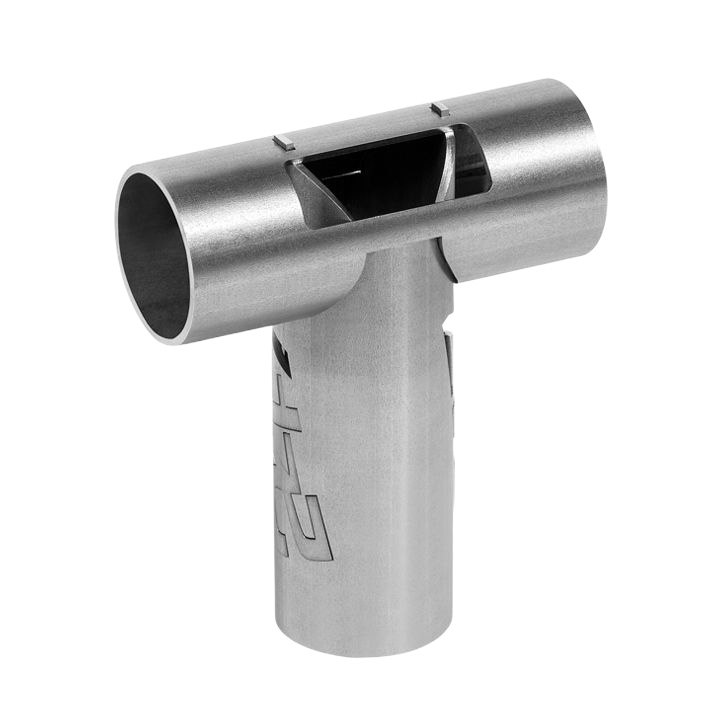What is Tube Laser Cutting?
2024-07-19
Tube laser cutting is a precise and efficient method used to cut various shapes and sizes from tubular materials using laser technology. This cutting technique is widely employed in industries such as manufacturing, automotive, aerospace, and construction due to its accuracy and versatility. Here’s a detailed overview:
What is Tube Laser Cutting?
Tube Laser Cutting refers to the use of a laser beam to cut tubes or pipes into specified shapes and sizes. The laser’s high intensity allows for intricate and precise cuts, making it ideal for complex designs and high-quality finishes.
Key Components:
1. Laser Source:
- Fiber Lasers: Most commonly used for tube cutting due to their efficiency and precision.
- CO2 Lasers: Also used but less common for tube cutting compared to fiber lasers.
2. CNC System:
- Computer Numerical Control (CNC): Provides precise control over the cutting process based on programmed designs.
3. Workholding System:
- Clamping Mechanism: Securely holds the tube in place during the cutting process.
4. Optics and Focus:
- Lenses and Mirrors: Direct and focus the laser beam onto the tube material.
5. Assist Gas:
- Oxygen, Nitrogen, or Air: Used to blow away molten material and aid in the cutting process.
Advantages:
1. Precision and Accuracy:
- High Tolerance: Achieves precise cuts with tight tolerances, ideal for intricate and complex designs.
2. Versatility:
- Material Types: Can cut various materials, including steel, aluminum, stainless steel, and other metals.
- Shapes and Sizes: Capable of producing various shapes, such as circles, squares, slots, and complex patterns.
3. Efficiency:
- Reduced Waste: The laser beam cuts with minimal material waste, leading to cost savings.
- Speed: Faster cutting speeds compared to traditional methods.
4. No Tool Wear:
- Non-Contact Cutting: The laser doesn’t physically contact the material, reducing tool wear and maintenance.
5. Automation:
- CNC Control: Enables automation and integration with other manufacturing processes.
Applications:
1. Manufacturing:
- Frames and Supports: Used in producing frames for machinery, equipment, and structural components.
- Bracketry and Fixtures: For creating custom brackets, fixtures, and supports.
2. Automotive:
- Chassis and Components: Used for cutting and shaping parts for automotive frames and components.
3. Aerospace:
- Structural Parts: Produces precise components for aircraft and spacecraft.
4. Construction:
- Steel Tubing: Used in structural steelwork and architectural elements.
5. Furniture:
- Custom Designs: Creates intricate patterns and shapes for metal furniture.
Process:
1. Preparation:
- Design Input: CAD drawings or digital designs are input into the CNC system.
- Material Loading: The tube is loaded and secured in the workholding system.
2. Laser Cutting:
- Beam Focusing: The laser beam is focused onto the tube material.
- Cutting Path: The laser follows the programmed path, cutting through the material with high precision.
- Assist Gas Application: Assist gases are used to clear away molten material and improve cutting quality.
3. Post-Processing:
- Deburring: Removal of any sharp edges or burrs if necessary.
- Inspection: Quality control checks to ensure the cut meets specifications.
Considerations:
1. Material Thickness:
- The thickness of the tube affects the laser’s cutting capability. Ensure the laser cutter is rated for the material thickness required.
2. Tube Orientation:
- Proper alignment and clamping of the tube are crucial for accurate cuts.
3. Design Complexity:
- Complex designs may require advanced programming and calibration to ensure precise results.
4. Maintenance:
- Regular maintenance of the laser machine and optics is essential for consistent performance and longevity.
Safety:
1. Protective Gear:
- Operators should wear appropriate safety gear, such as laser safety glasses, to protect against laser exposure.
2. Ventilation:
- Ensure adequate ventilation to remove fumes and gases generated during the cutting process.
3. Training:
- Operators should be properly trained in machine operation and safety protocols.
Conclusion:
Tube laser cutting is a sophisticated technology offering high precision, efficiency, and versatility for cutting tubular materials. Its applications span various industries, providing custom solutions and high-quality results. By understanding its advantages, applications, and considerations, manufacturers can effectively utilize tube laser cutting to enhance their production processes.



